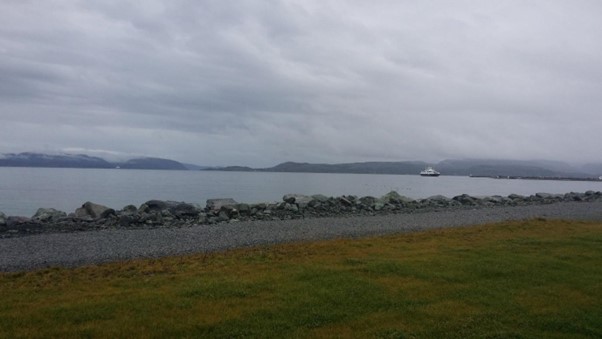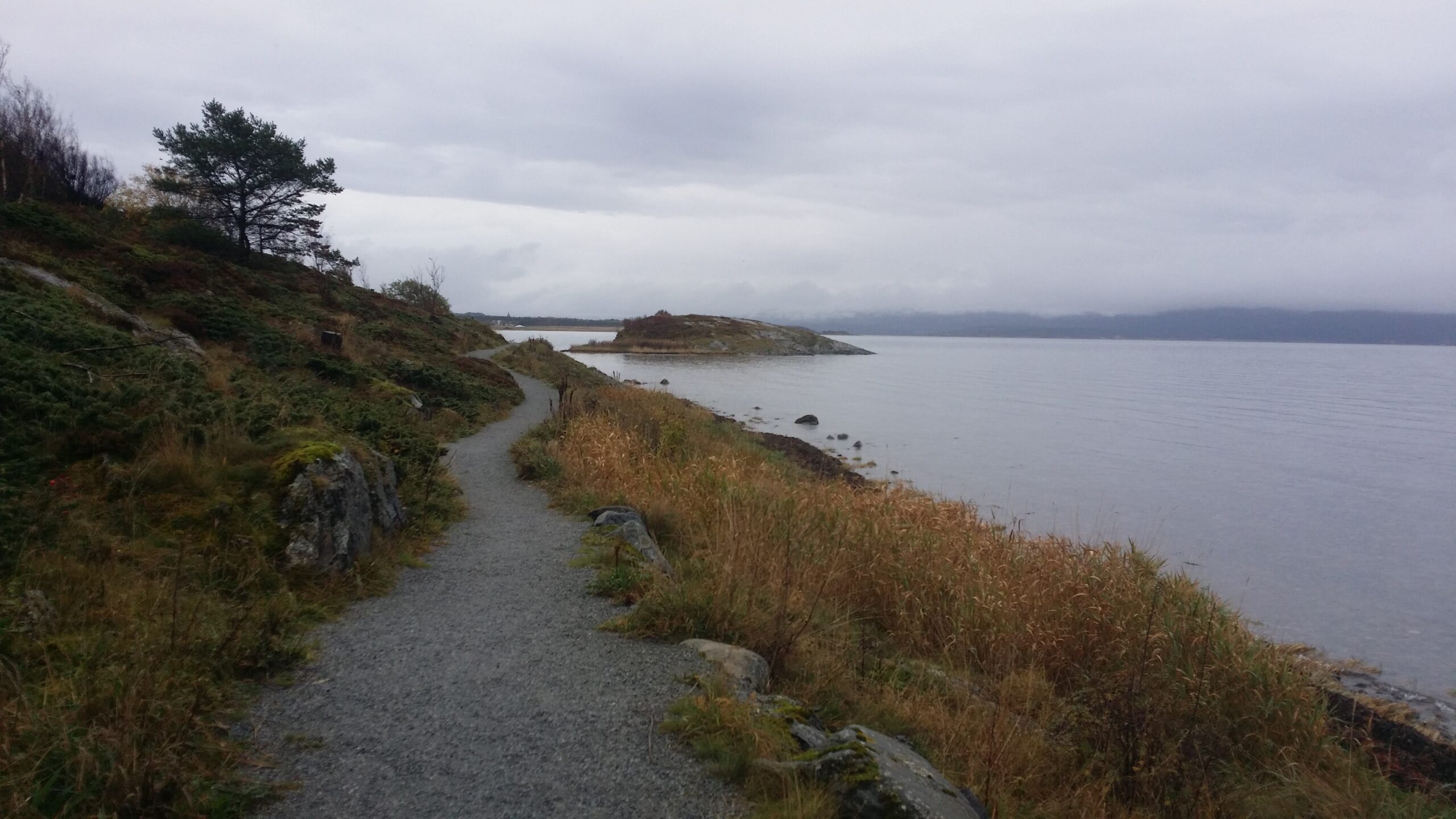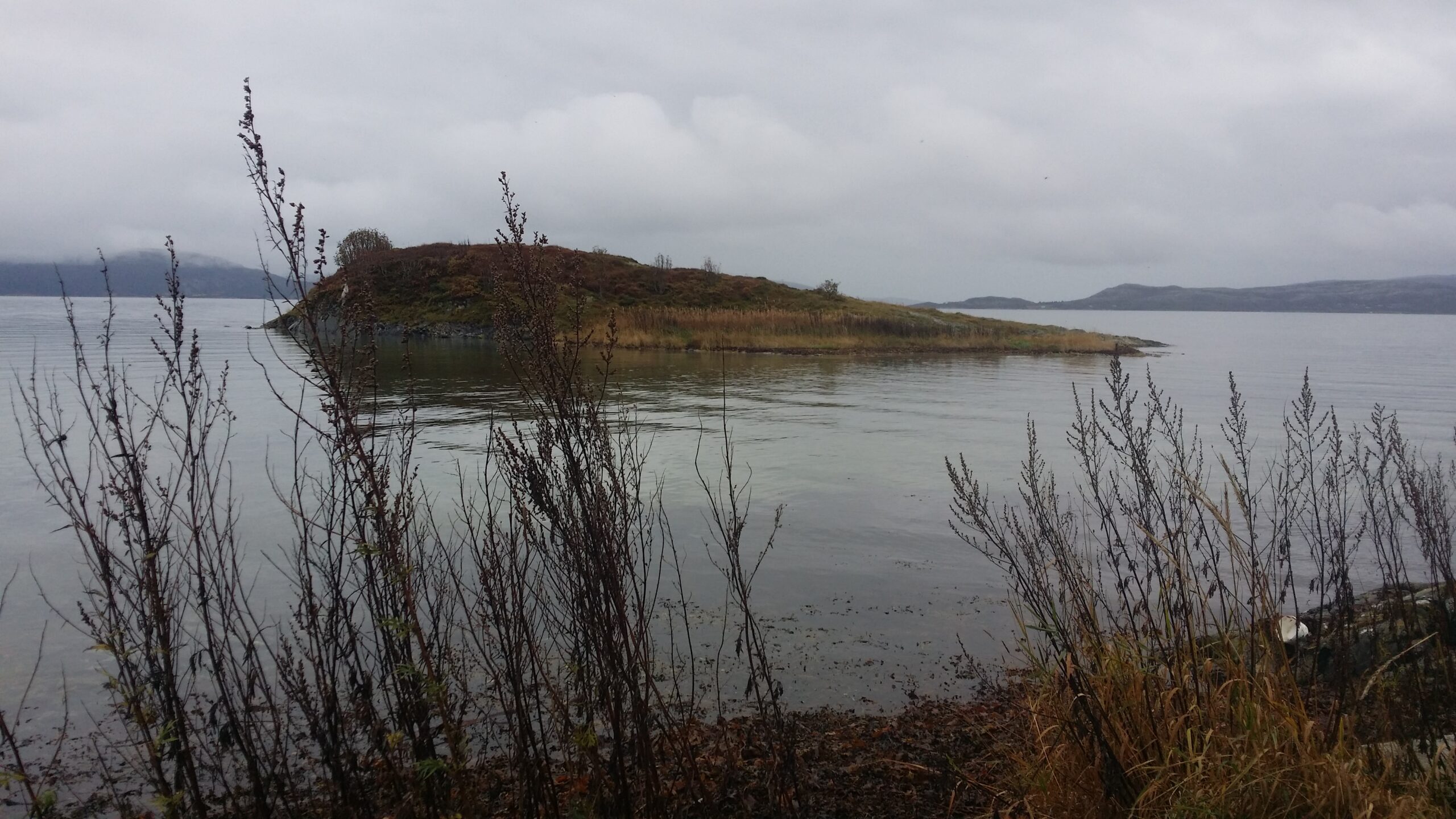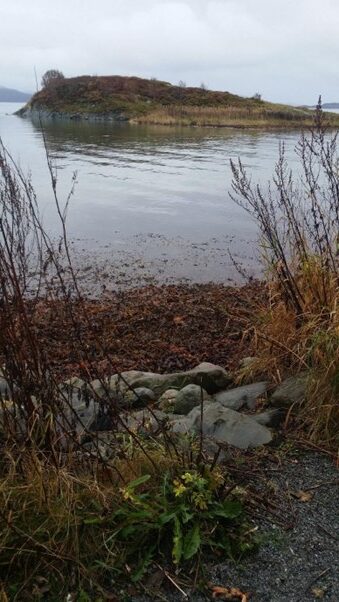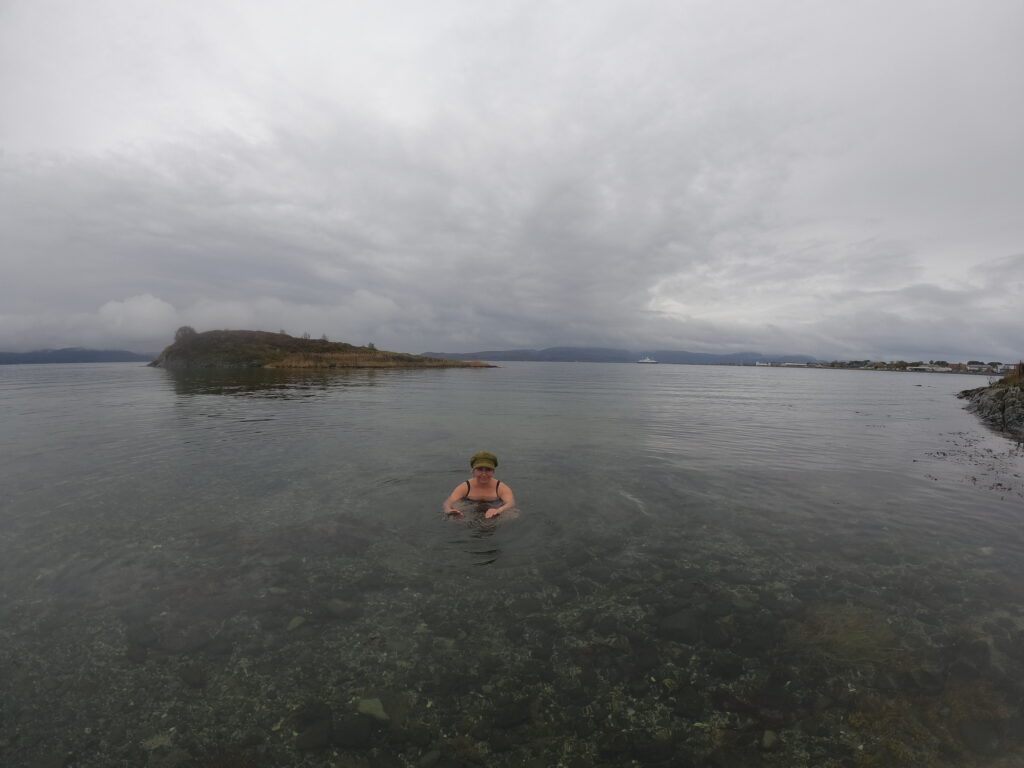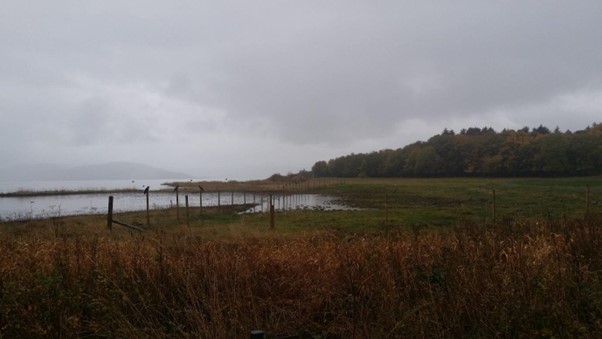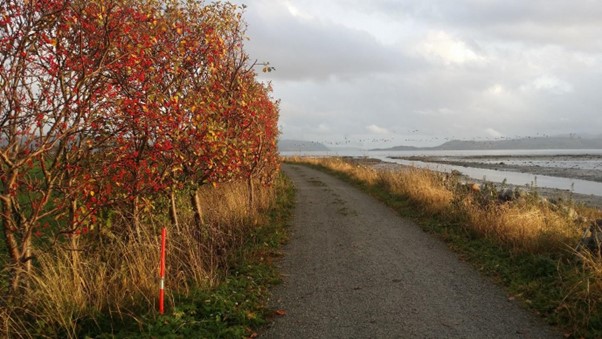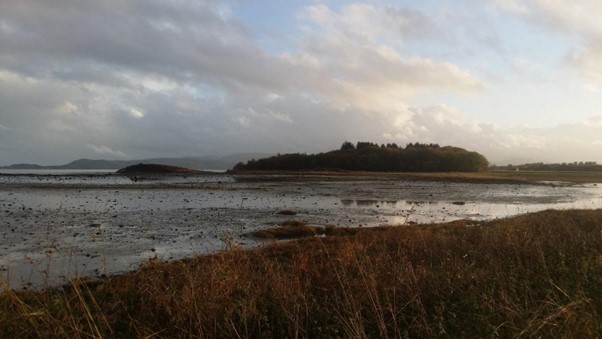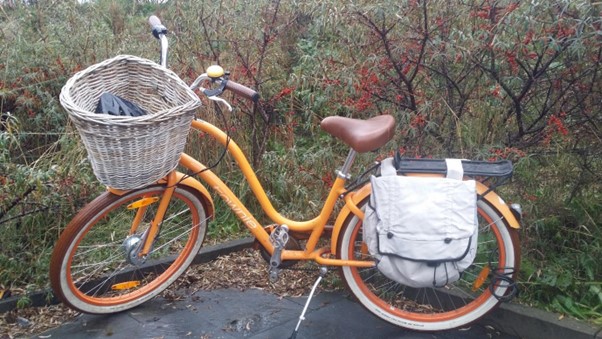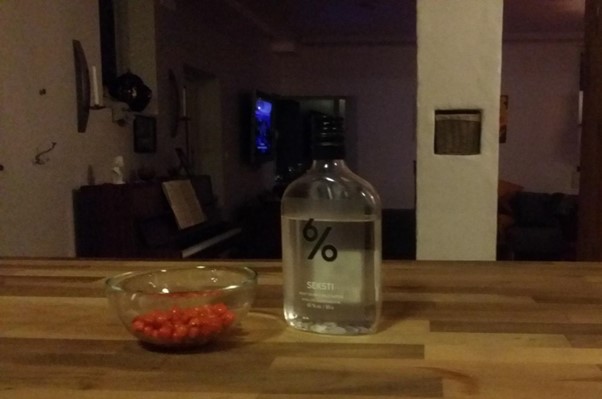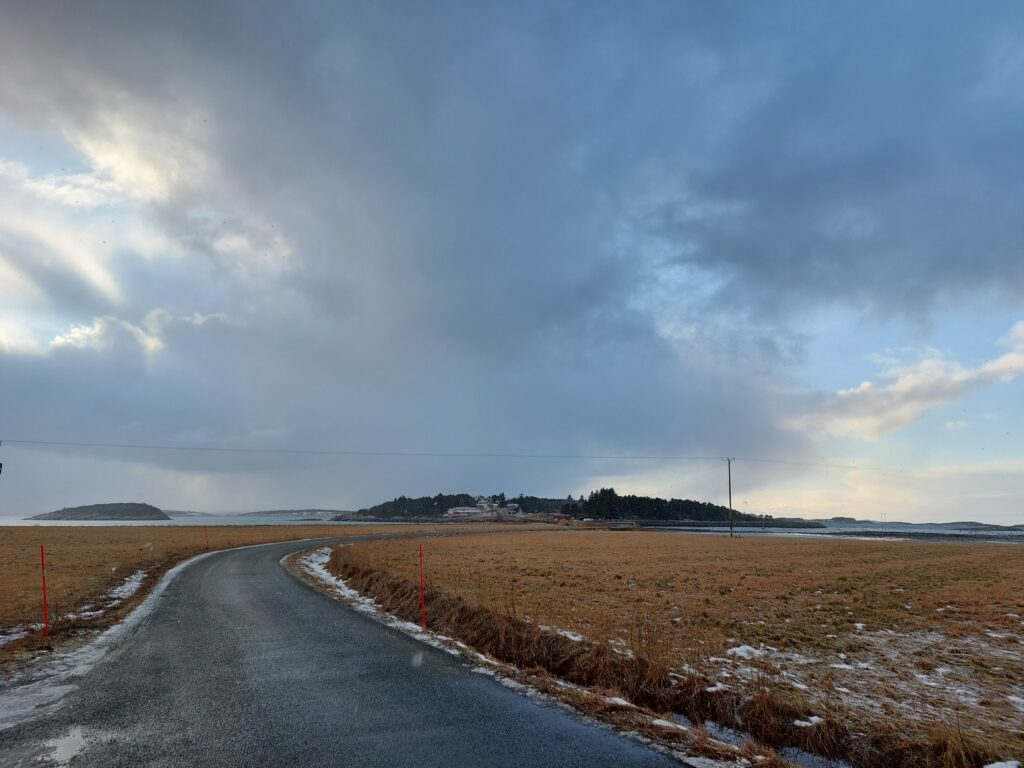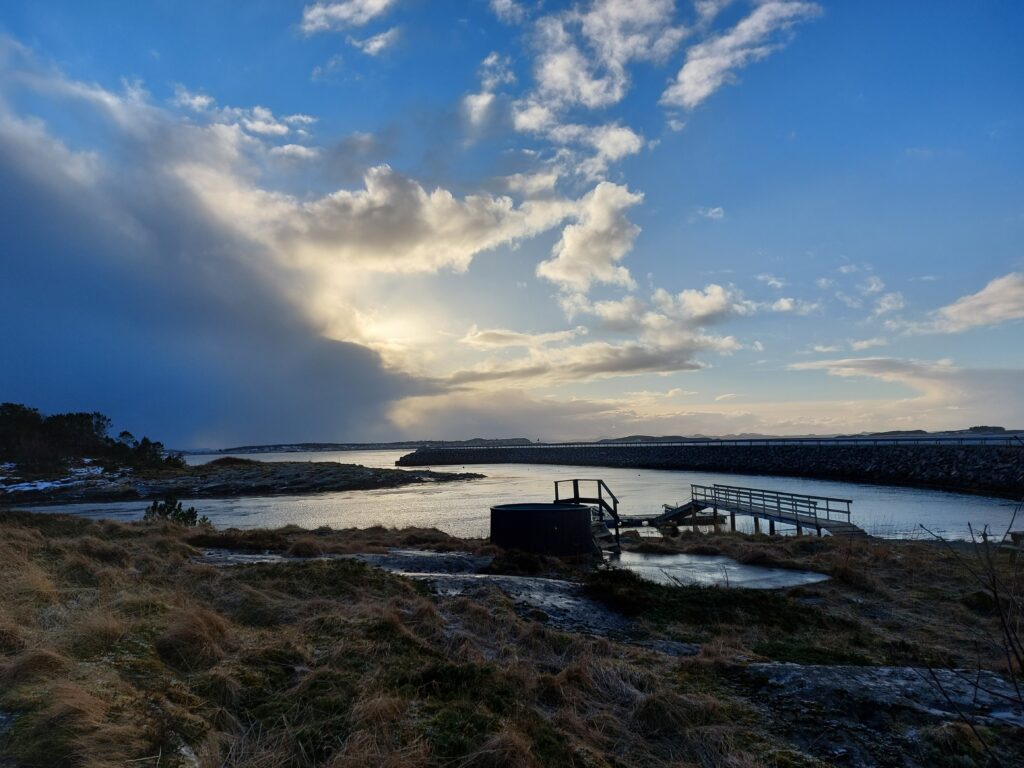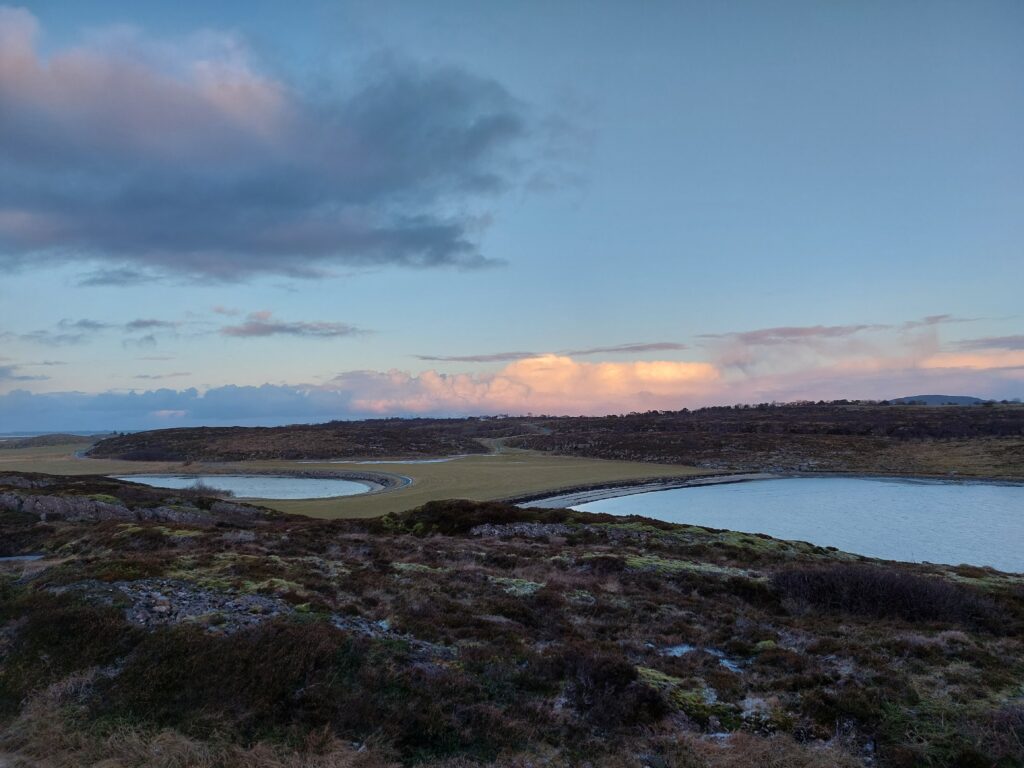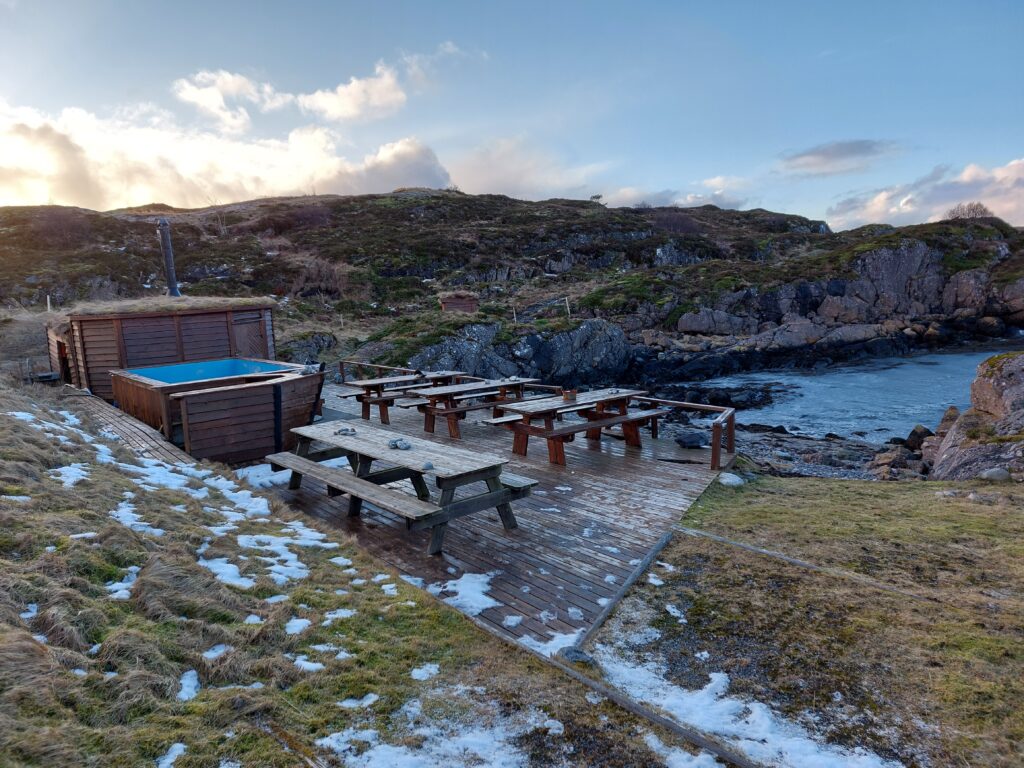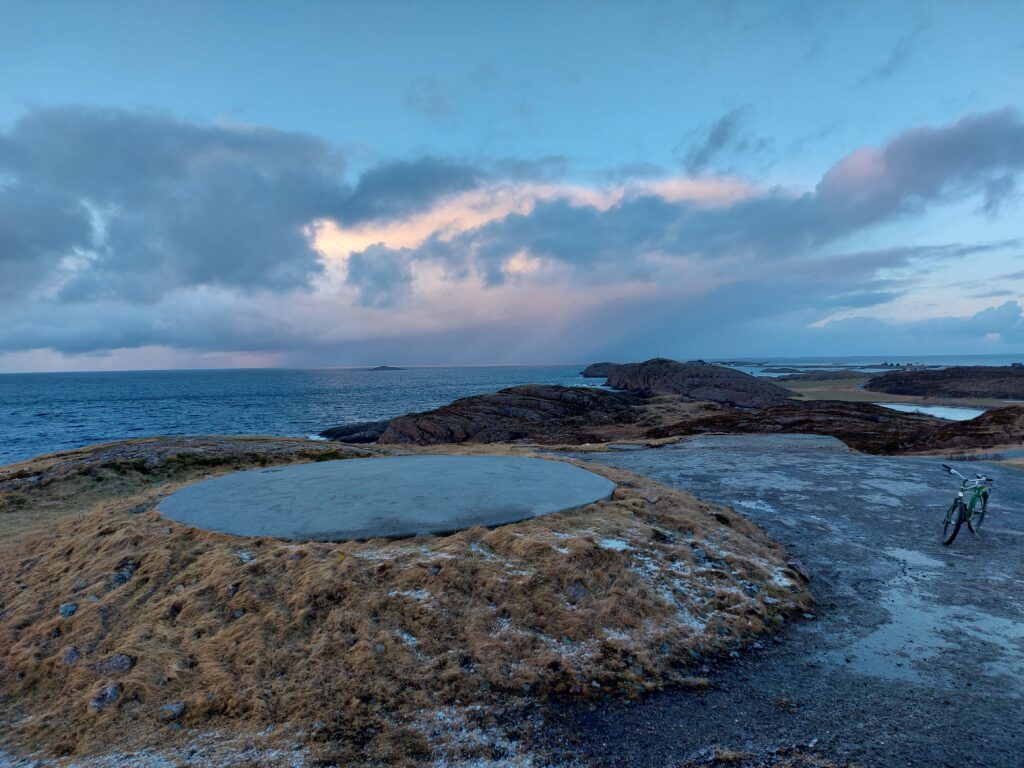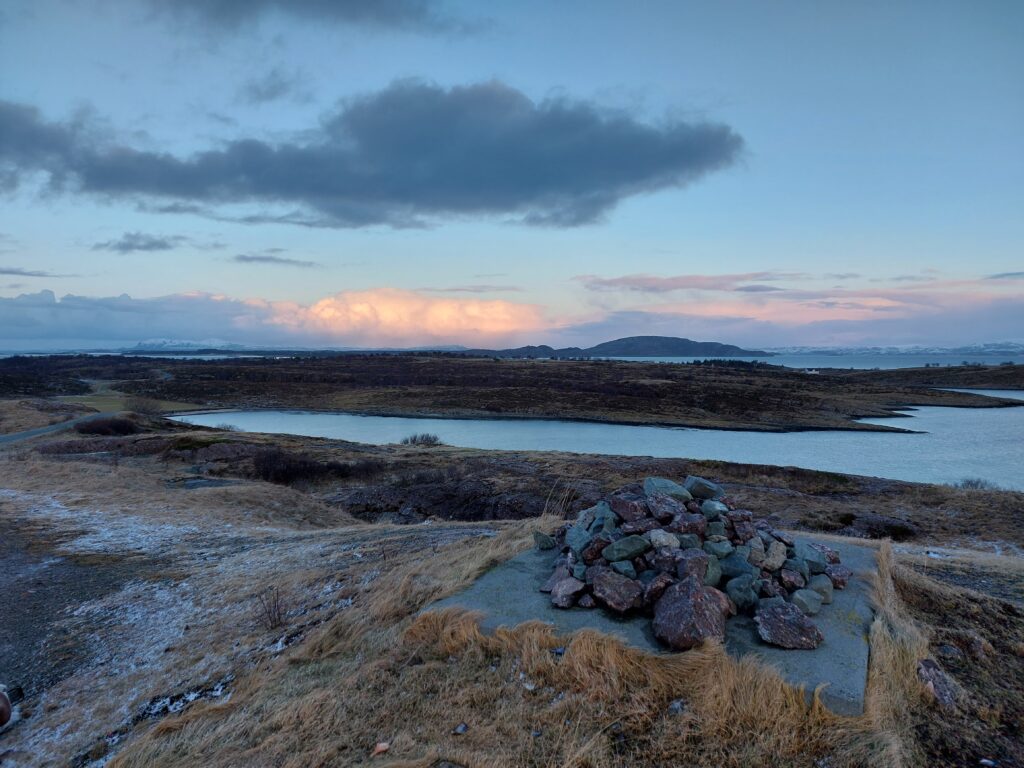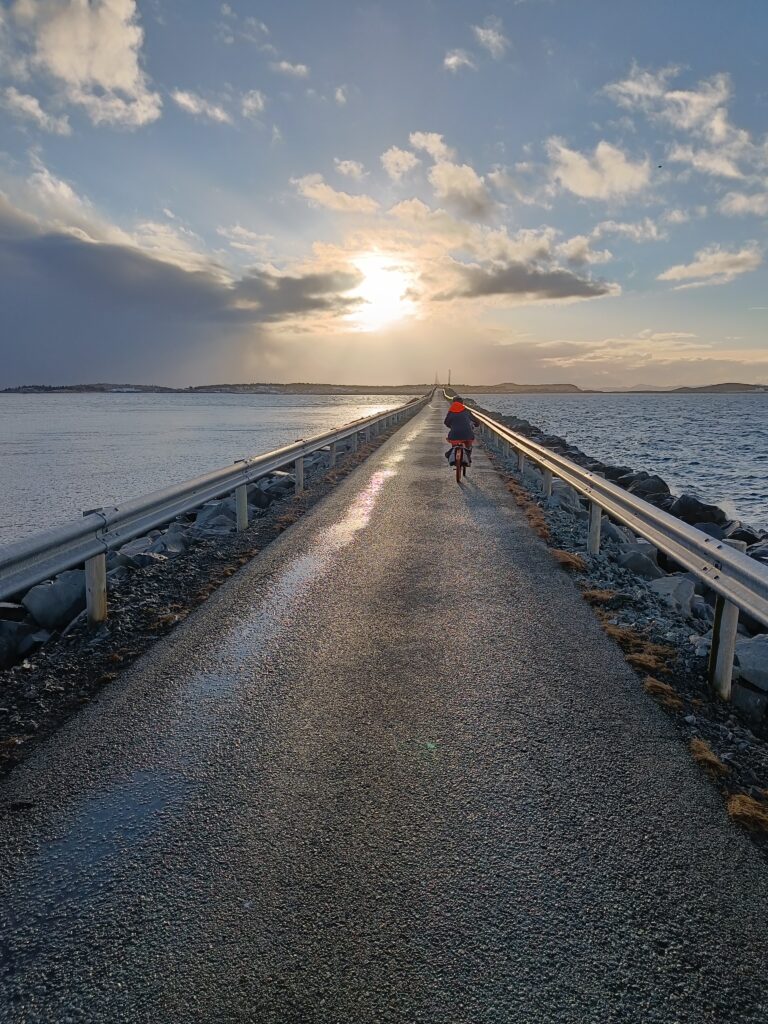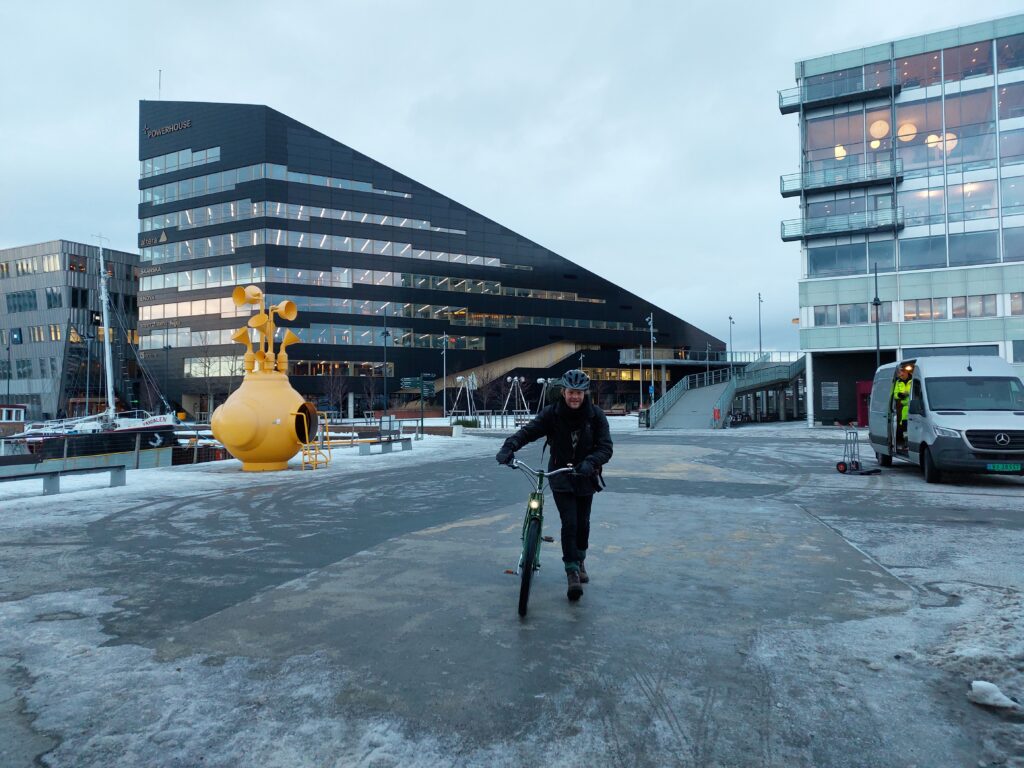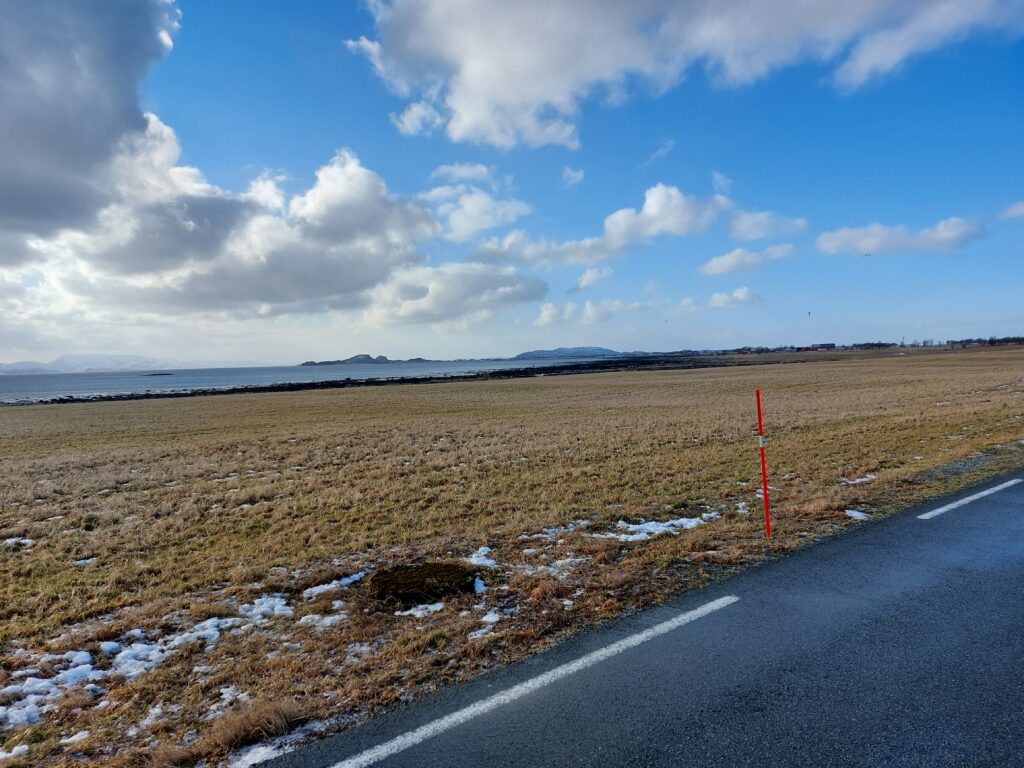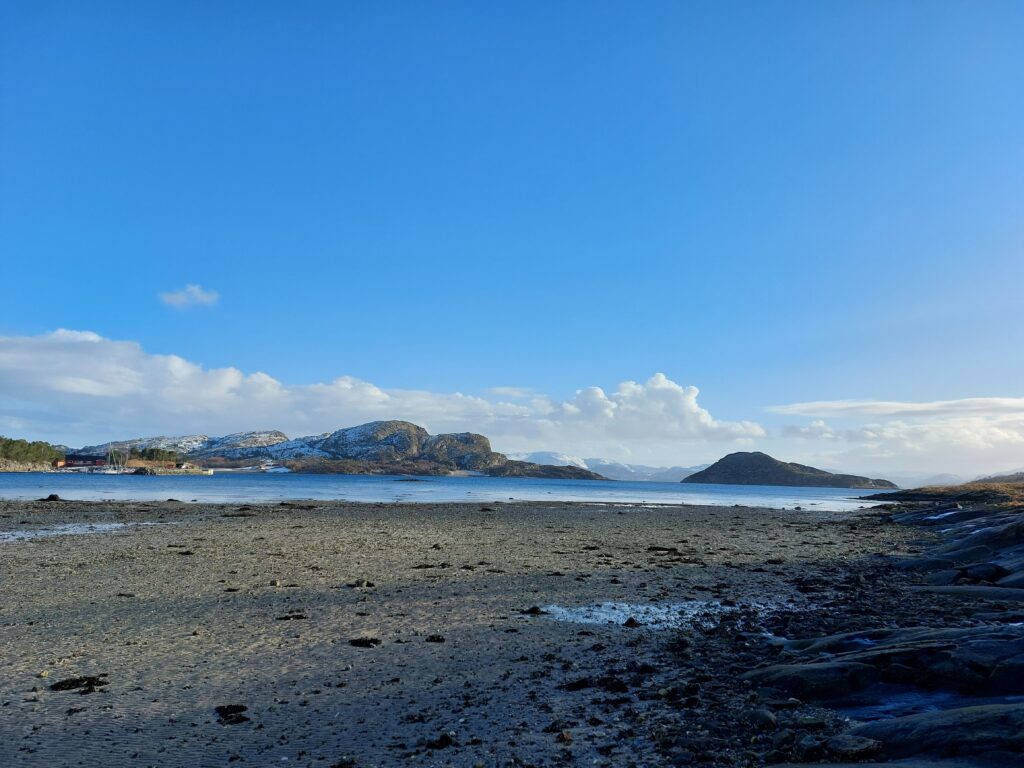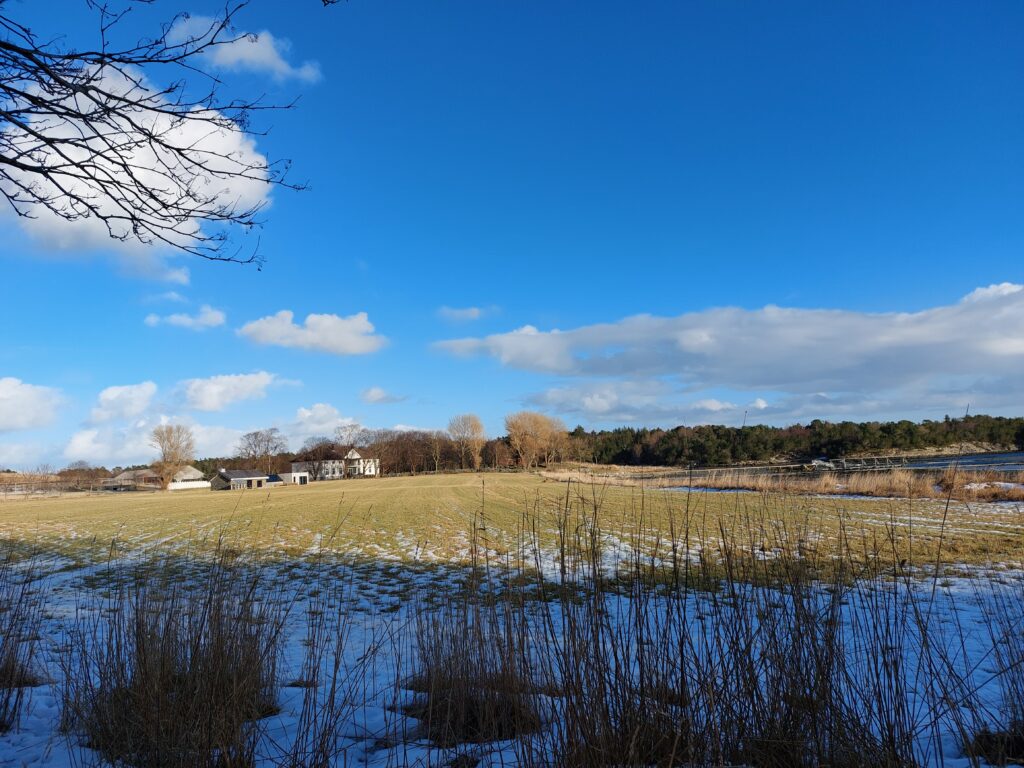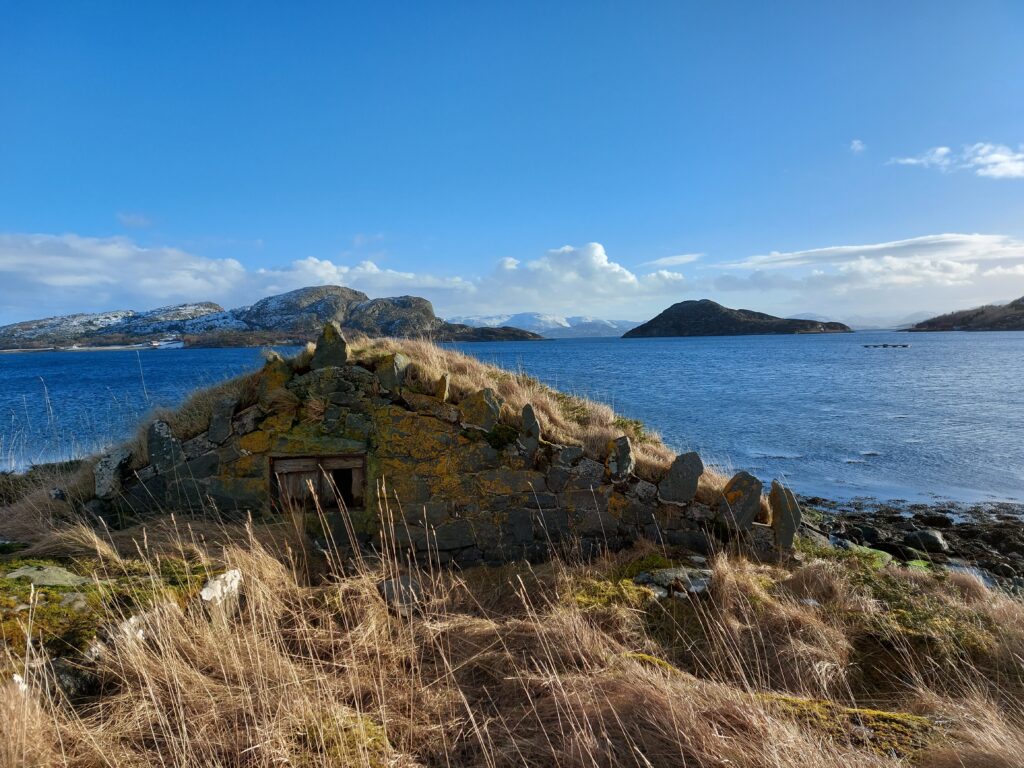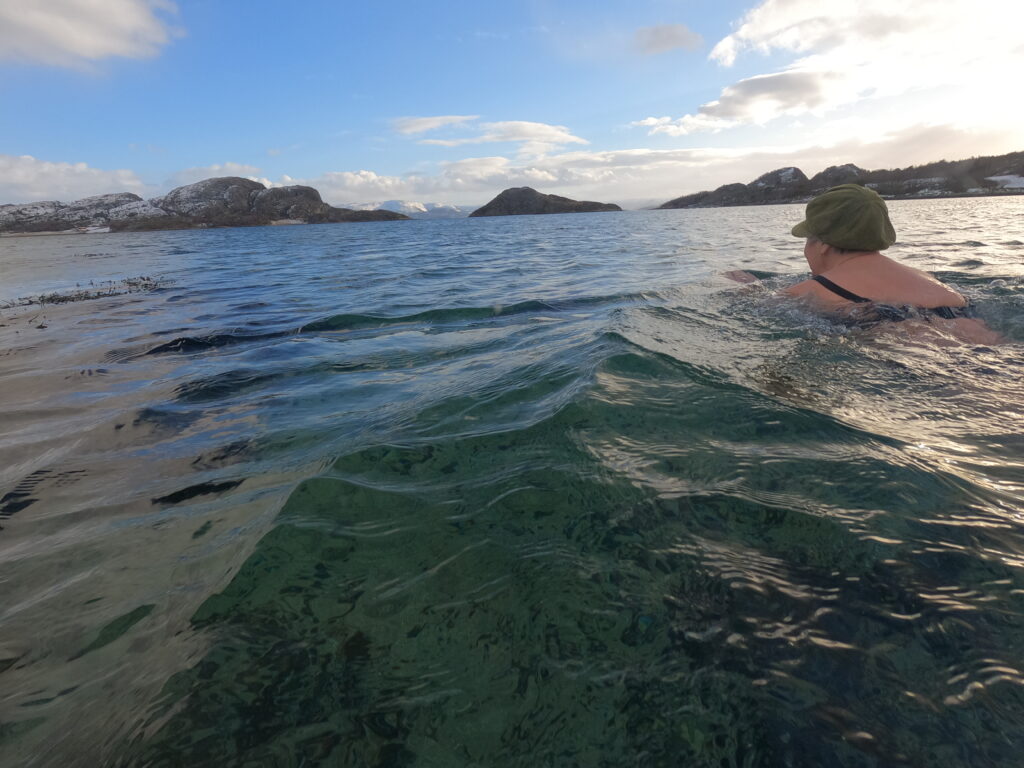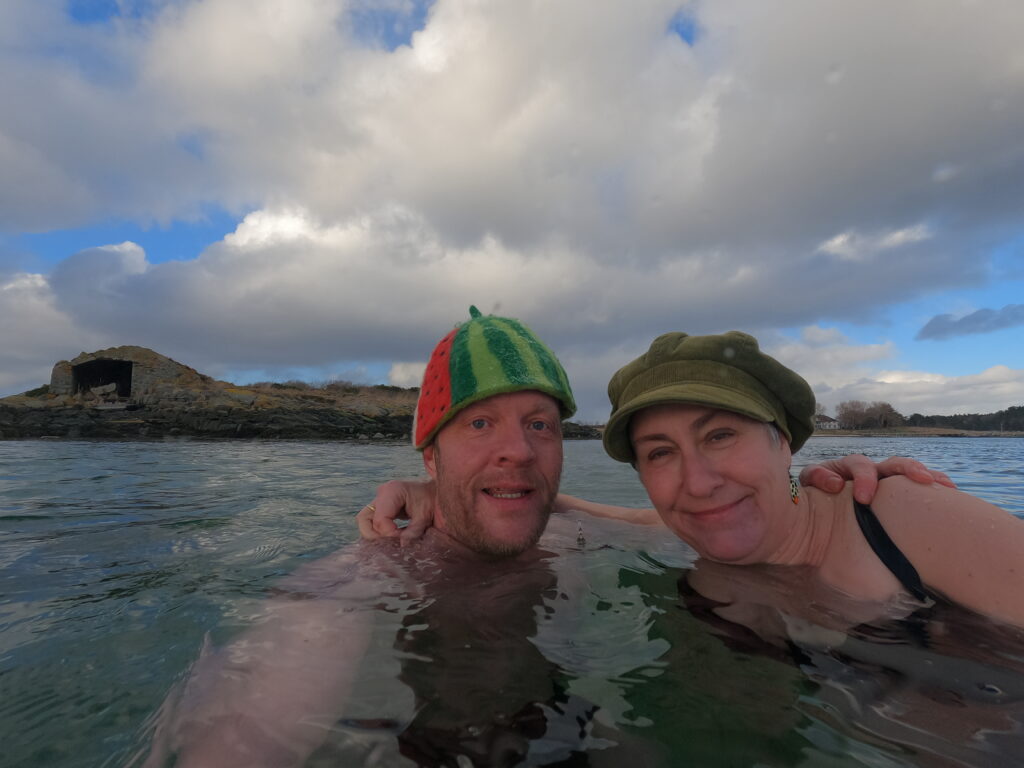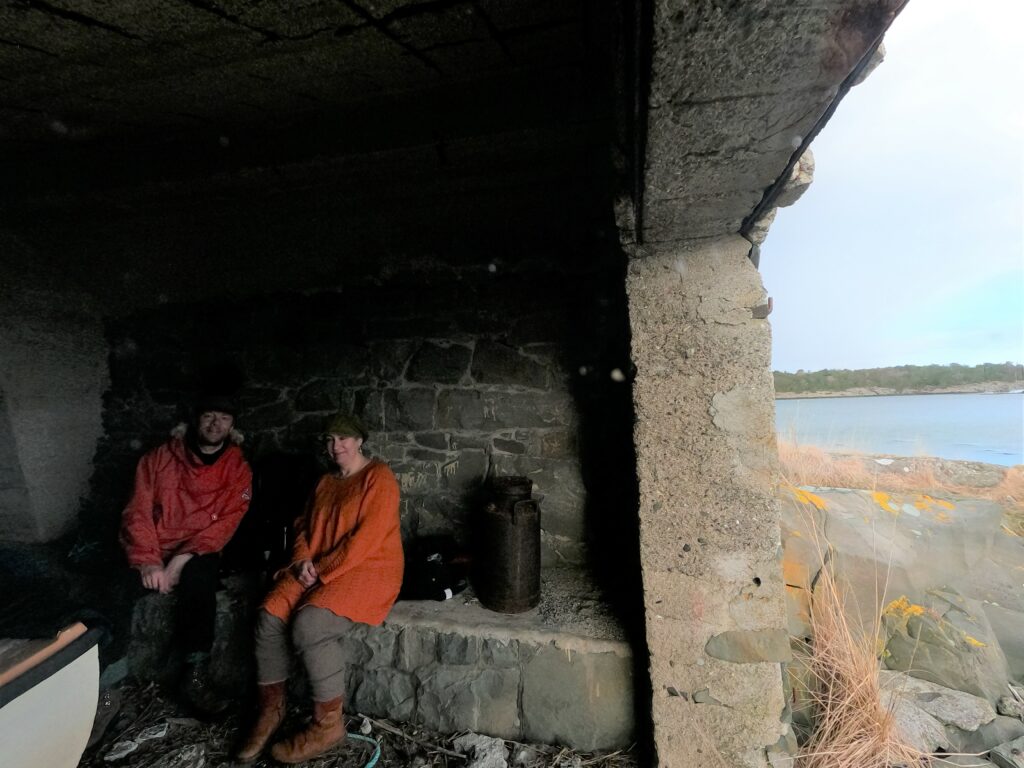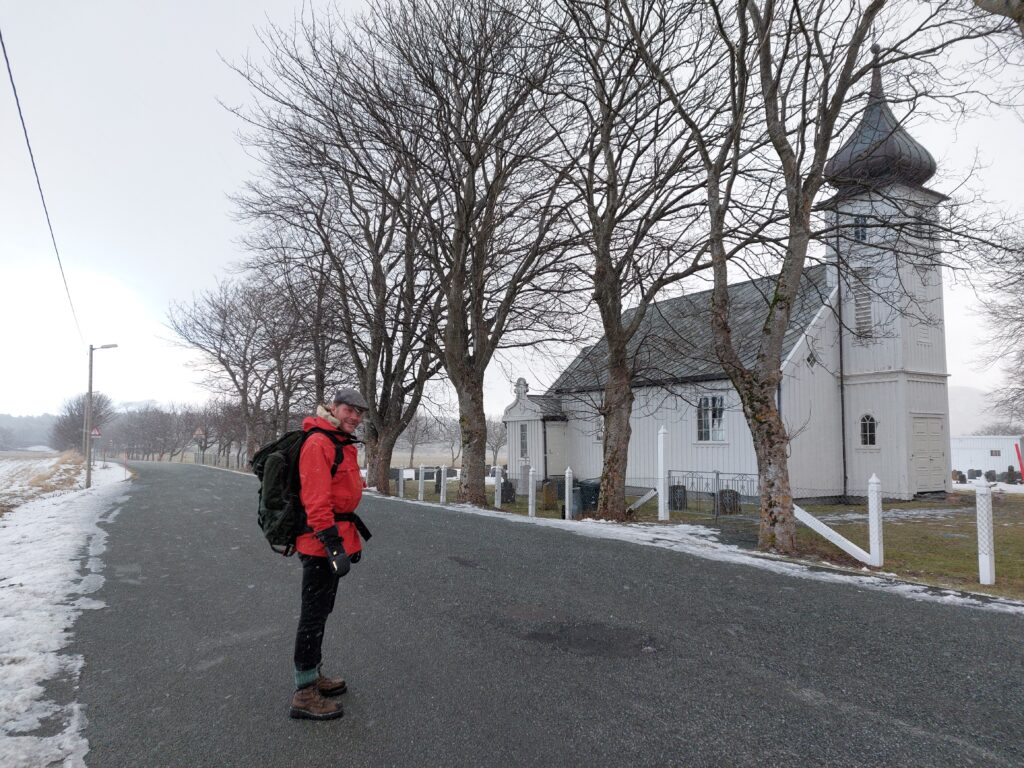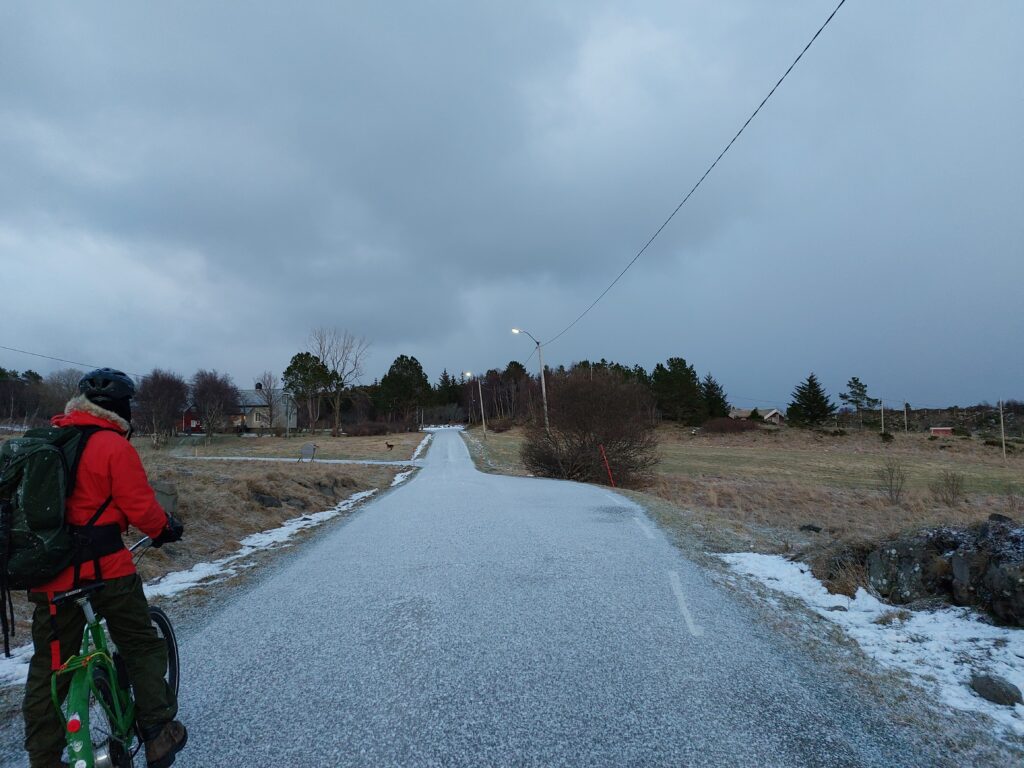We brought our bikes on the local boat, and this is a Sunday trip we can really recommend:
Take the boat from Trondheim at noon, cycle to Austråttborgen (with a swim around Bruholmen, as we wrote about in the previous blog post), swim in Jektvika on the way back and visit the Hannah Ryggen exhibition before the boat returns a little before seven in the evening. Definitely, this would have been a slightly better plan in the summer – when the sites are open…
Anyway, the bike trail is really great. And you will always know where you’re going – the tower profile of Austråttborgen is visible on the signposts!
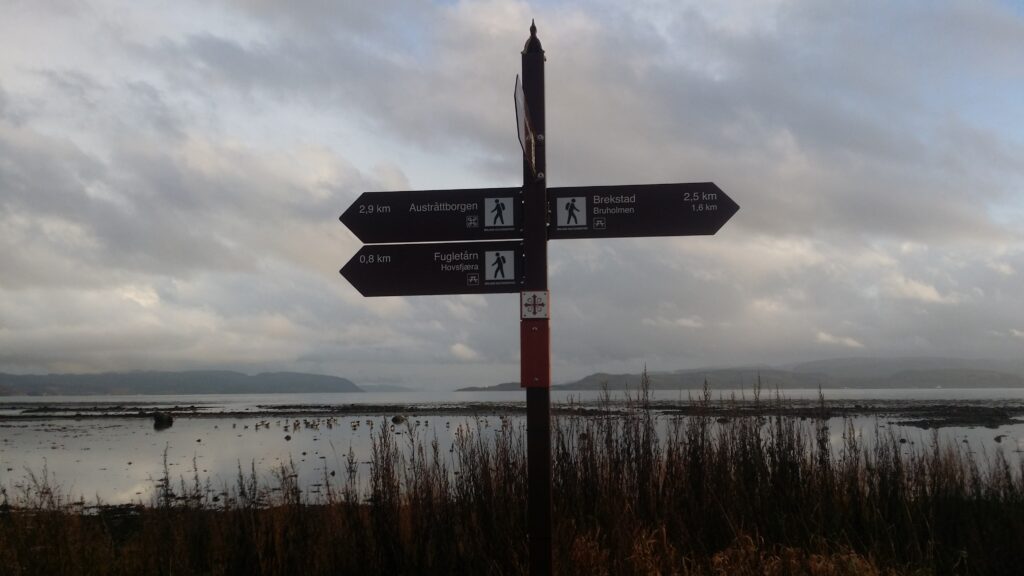
You ride along the fjord and wetlands, and partly inside a forest with lichen covered trees.
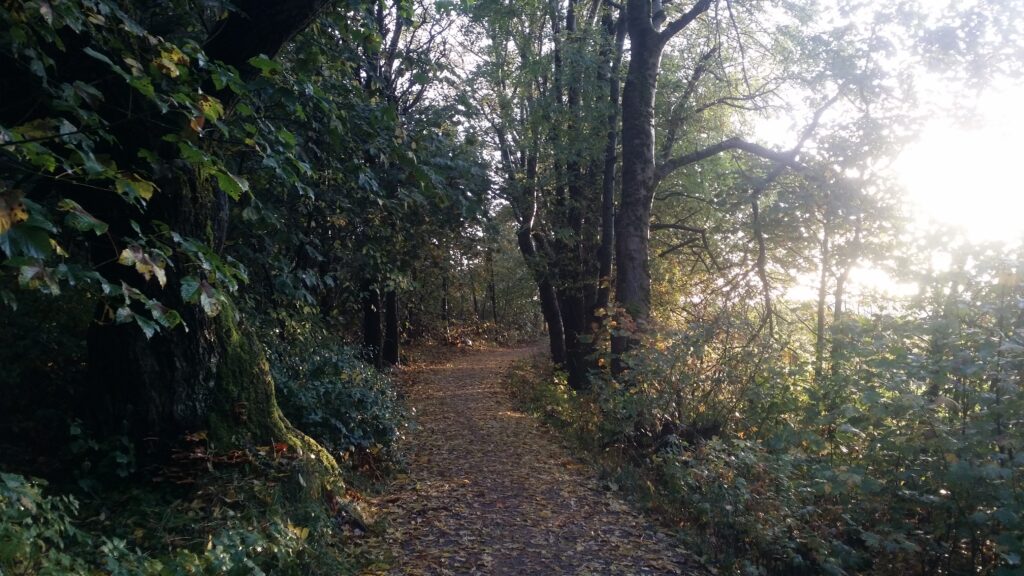
On the way you will pass 3 bridges, and there are benches and birdwatching sheds along the way.
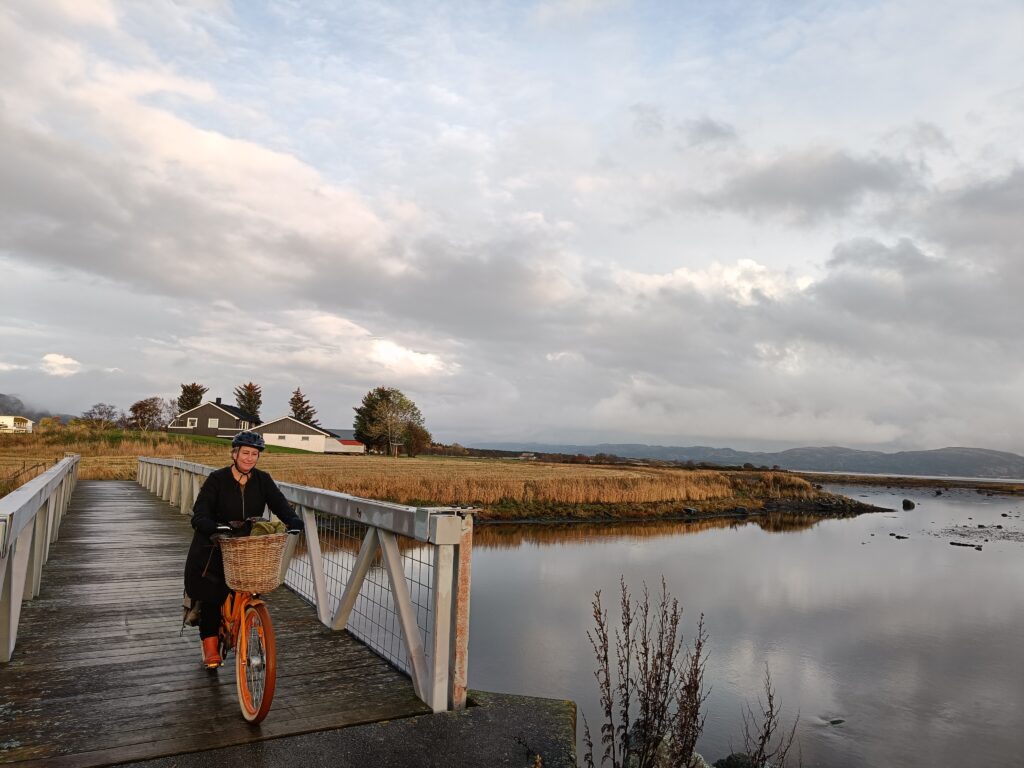
1000 years ago, Finn Arnesson (a liegeman for Olav Haraldsson) owned Austrått. Finn fought side by side with Olav the (soon to be) Saint in the battle of Stiklestad. His brother, Kalv, however, was on the opposite side, in the peasant army, and Kalv even became one of the saint Olav’s executioners. I wonder how interesting the family reunions at Austrått were in ancient times!
The most famous owner of Austrått is probably Ingerd Ottesdatter (Mrs. Inger of Austrått). She was a large landowner and held several regions in the mid-northern part of Norway. Mrs. Inger was in a long-standing feud with the last Archbishop of Nidaros: Olav Engelbrektsson. It was Mrs. Inger’s great-great-grandson Ove Bjelke who built the castle as we see it today. You can see the castle tower from the center of Brekstad, a fairytale castle!
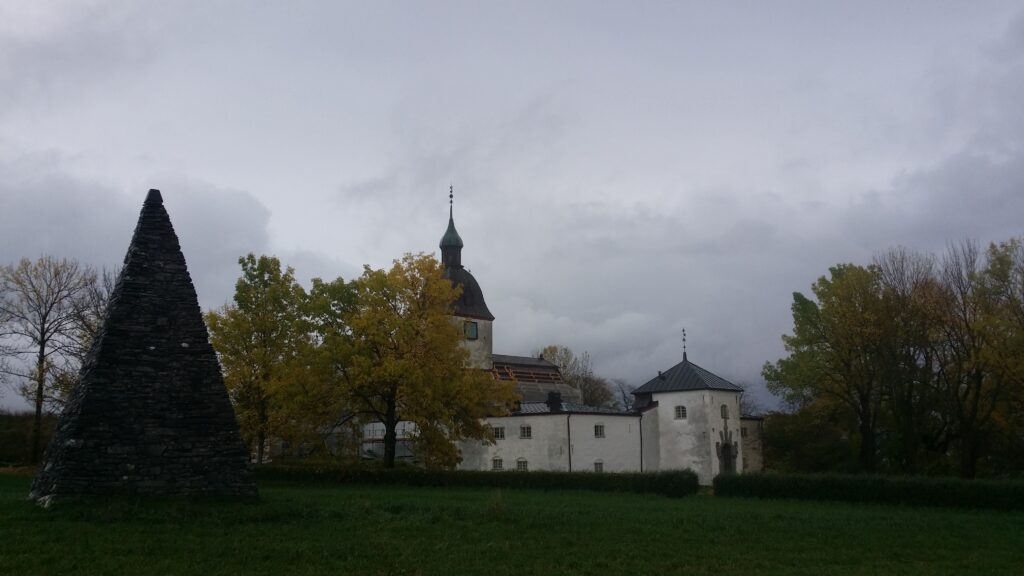
Around 1200, a private chapel was built at Austrått. This church had a large, strong tower. The church with tower was part of the castle complex that Ove Bjelke had built between 1654 and 1656. In the main building’s portal you can see the names and family coats of arms of the previous owners carved in soapstone.
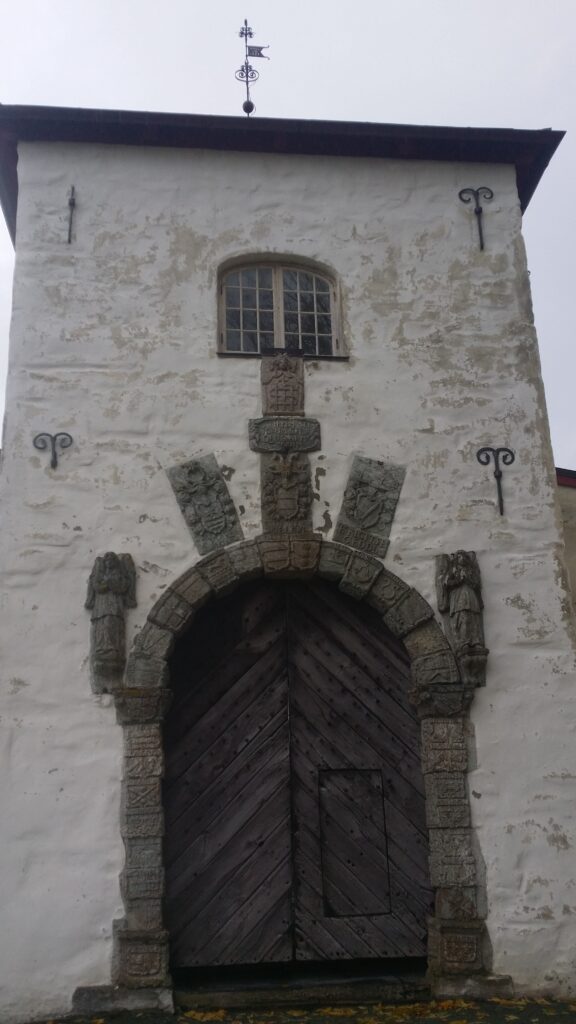
When we visited the facility in October 2021, it was closed for the winter, and also under renovation (they were replacing the roof). We therefore do not mention here the arcades inside the courtyard with their caryatids (columns sculpted as female figures – named after the basket-shaped headdresses worn by women from the city of Karyai in Laconia). And definitely not that the caryatids at Austrått depict the story of the wise and the foolish virgins, who respectively had and did not have enough oil for their lamps.
No, instead we let history be history and get ready for swimming. At Austrått it is incredibly right to swim in Jektvika, as we had heard, a pearl of a beach, which Ørland Municipality has upgraded with white shell sand. But where was this beach? We cycled to Austrått harbour and found a bay by the campsite, yes, we did. But it wasn’t that fantastic. Knut asked Google for help:
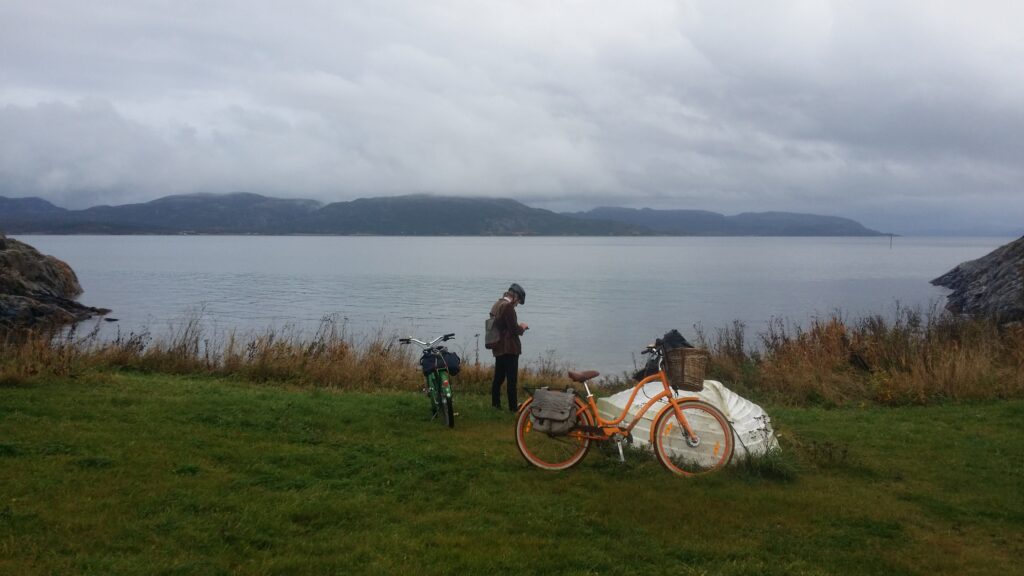
Aha! There is a bay, Jektvika, a little further west. And yes – it is a very beautiful place!
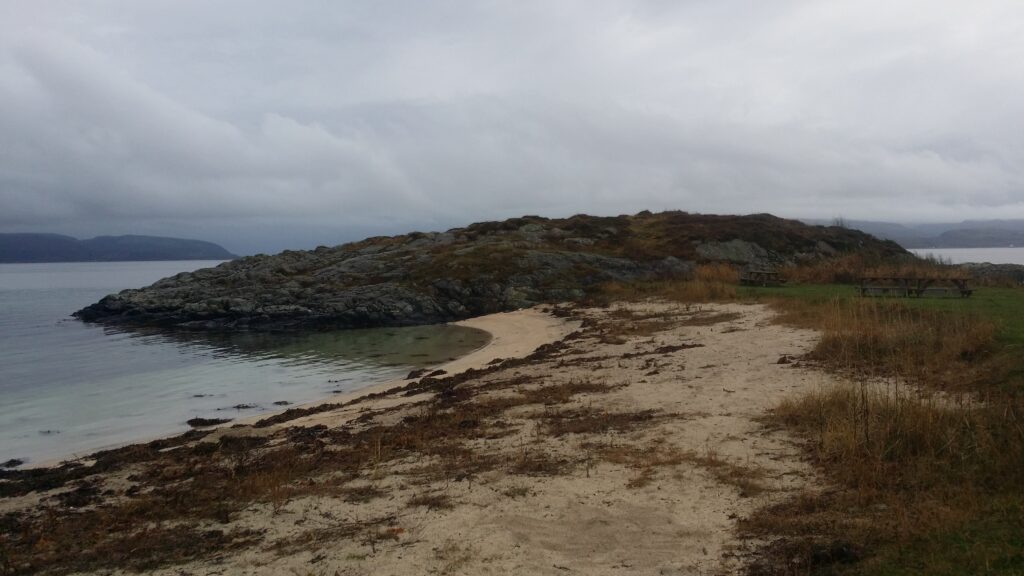
There is a sand volleyball court and benches at the site, too. Add crystal clear water:

… then there’s not much more to say (other than that a grill would be nice). And in October: Not a hint of a queue on the beach. Actually, completely empty. Strange thing, this wet, gray Sunday.
Another weird thing was the access platform on the east side of the bay. What is that? Balconies for theater performances in the water? Fishing spots? We definitely don’t recommend diving from here, it way too shallow:

But swimming in Jektvika? Yes indeed!


